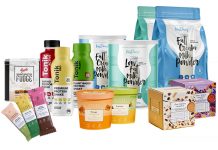
Australian dairy manufacturers can look forward to another favourable season in 2023/24, with the industry set for its fourth consecutive profitable year, according to Rabobank’s recently released annual Australian Dairy Seasonal Outlook.
The report, titled “Looking for a Firm Landing Zone,” stated there is “welcome relief” for dairy producers from a recent record-high cost base with lower prices for purchased feed and fertiliser pouring through balance sheets.
The agribusiness banking specialist noted that while the upcoming season’s milk price is likely to be lower than the “lofty highs” currently being offered across parts of the southern export region – reflecting the current downturn in the global commodity price cycle – there is a “firm landing zone” expected for new season Australian milk prices.
This is brought on by higher domestic dairy market returns, a depreciating Australian currency, and “aggressive recruitment and retention strategies” employed by dairy processors in a sector where milk supply is fiercely competitive, said Michael Harvey, senior dairy analyst at Rabobank.
He claimed that these factors are providing a “buffering effect” against the full brunt of global pressures.
The bank anticipates minimum bids for new season milk in southern Australia to range between AUD 8.50/kgMS and AUD 9.00/kgMS as the June 1 deadline for minimum milk price offers from Australian dairy firms draws near.
“At worst, this represents a 10 per cent decrease from 2022/23 prices and a farmgate milk price that is well above the medium-term average for southern Australia since the introduction of the industry’s Dairy Code of Conduct in January 2020,” Harvey said.
The report found that local wheat prices are closely following worldwide patterns while global benchmark feed prices are down from last year but remain above medium-term averages.
“Locally, grain supplies are high, after several bumper winter crops, with the prospect of another decent winter crop this year meaning feed supply will be adequate for buyers and will help to dampen feed supply risks,” Harvey explained.
According to the senior dairy analyst, Australian milk manufacturers will already profit from a large drop in the price of fertiliser on a worldwide scale and an increase in affordability.
“Looking forward, Rabobank expects the underlying fundamentals in the fertiliser market to lead a period of price stability, which will assist Australian dairy farmers as they prepare their nutrient management programs for the year ahead,” he said.
However, the Rabobank Outlook cautions that “labour is a major headache” and that there will still be additional cost headwinds on farms in 2023–2024, including higher interest rates.




















